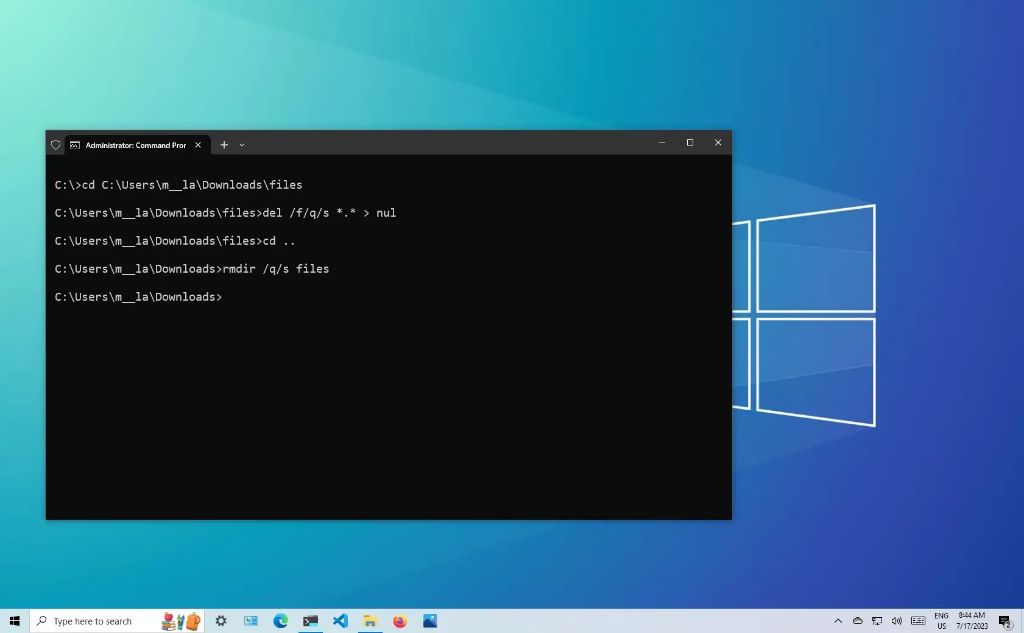Having large, unnecessary files taking up space on your hard drive can slow down your PC and cause storage issues. When you need to free up drive space quickly in Windows 10, deleting these large files is one of the quickest and most effective solutions. Here are some tips for finding and removing large files fast in Windows 10.
1. Use Windows Explorer to Locate Large Files
The easiest way to find large files on your Windows 10 PC is to open up Windows Explorer (also called File Explorer). This allows you to visually browse through all the drives and folders on your system.
To open Windows Explorer, click on the folder icon in your taskbar or press Windows Key + E on your keyboard. When Explorer opens, you will see a sidebar with different drives and folders. Click on your C: drive or wherever you want to search for large files.
At the top of the Explorer window, click on the “View” tab. Make sure the checkbox for “File name extensions” is checked. This will show you the file type for each file, making it easier to identify large files.
Next, click on the “View” drop down menu and select “Sort by”. Choose the “Size” option to sort all files from largest to smallest. The biggest files in the folder will now appear at the top.
| File name | File type | File size |
|---|---|---|
| Video1.mp4 | Video file | 1.3 GB |
| old-backups.zip | Compressed folder | 980 MB |
This table shows an example of how the file explorer would display files when sorted by size, making it easy to identify large files.
Tips for Finding Large Files
- Check your Downloads folder for large installer files you may have forgotten about.
- Look in folders like Videos, Music, Pictures for very large files.
- Sort by size and check the root of each drive like C:, D:, etc.
- Click through subfolders to uncover hidden large files.
2. Use Disk Cleanup to Target Specific File Types
Another easy way to locate and delete large files in Windows 10 is to use the built-in Disk Cleanup tool.
Disk Cleanup allows you to specifically target certain file types that are safe to delete to free up a lot of space. This includes temporary files, previous Windows installation files, dump files, and more.
To run Disk Cleanup, click the Windows start menu and search for “Disk Cleanup”. Open the app when it appears in the search results.
Disk Cleanup will scan your drive and show how much space you can recover by deleting specific file types. Check the boxes next to any items you want to delete and click “OK”.
Some of the main file categories that Disk Cleanup targets include:
- Temporary files – Web browser caches, app data files, and other temp content.
- Downloaded program files – Installation files for programs you’ve already installed.
- Recycle Bin – Permanently deleted files stored in the recycle bin.
- System files – Unneeded Windows update files and crash dumps.
- Thumbnail cache – Folder thumbnail previews that can be recreated.
Running Disk Cleanup just a few times per year can easily recover tens of gigabytes of storage space on most PCs.
3. Use Third-Party Applications
There are also third-party applications available that can help you find and delete large files on your Windows 10 system.
Here are some of the top-rated apps to consider:
1. TreeSize Free
TreeSize Free is a very useful utility for scanning hard drives and mapping out exactly where large files are located based on folder size.
Once installed, TreeSize Free will scan your selected drive and visually display folders by size in a treemap chart. This makes it very easy to pinpoint where large files are hiding.
You can then right-click on any folder and delete files or the entire folder. An “Export” feature lets you save lists of large files found to text/CSV files.
2. WinDirStat
WinDirStat has a similar disk mapping capability as TreeSize, displaying folders in various graphs and charts by size to uncover big files.
This tool lets you easily view the largest files and folders first and will even conduct scans for duplicate files. You can then delete files and folders directly within WinDirStat.
3. Wise Disk Cleaner
Wise Disk Cleaner provides an “Over sized files” scan that searches out files larger than a customizable size threshold. This makes it easy to flag enormous files for deletion.
The app also includes options to wipe free disk space, clear browser caches, find duplicate files, and shred previously deleted files. Advanced scheduling and auto-cleaning options are available.
4. Delete from Command Prompt
Finally, another option for advanced users is to delete files and folders directly from the Command Prompt.
This involves using Command Prompt commands like DEL and RD to target specific files or folders and remove them from the PC.
For example, to delete a single file you could use:
DEL C:\Users\Name\Downloads\large_file.zip
And to delete an entire folder including all contents you could run:
RD C:\Users\Name\Large_Folder /S /Q
The /S deletes all files and subfolders and /Q forces deletion without confirmation prompts.
Make sure you are extremely careful when deleting files using Command Prompt, as you can accidentally remove important files and folders if not specific enough.
Conclusion
Having low drive space on your Windows 10 PC can significantly slow it down while making it hard to install updates, new programs, or save files. Removing large unused files is key to reclaiming needed drive capacity.
Using options like Windows Explorer, Disk Cleanup, third-party apps, and Command Prompt makes it fast and easy to locate and delete the biggest space-hogging files. Just be cautious when permanently deleting files to avoid removing anything important.
Following quick monthly or quarterly scans to wipe large temporary files, downloaded installers, system files, caches, and other big unused content can help keep your PC lean and running smoothly.
